Experience-Seeds-Knowledge-Plant Discoveries-Ecological Enrichment-Join Now Click Here!

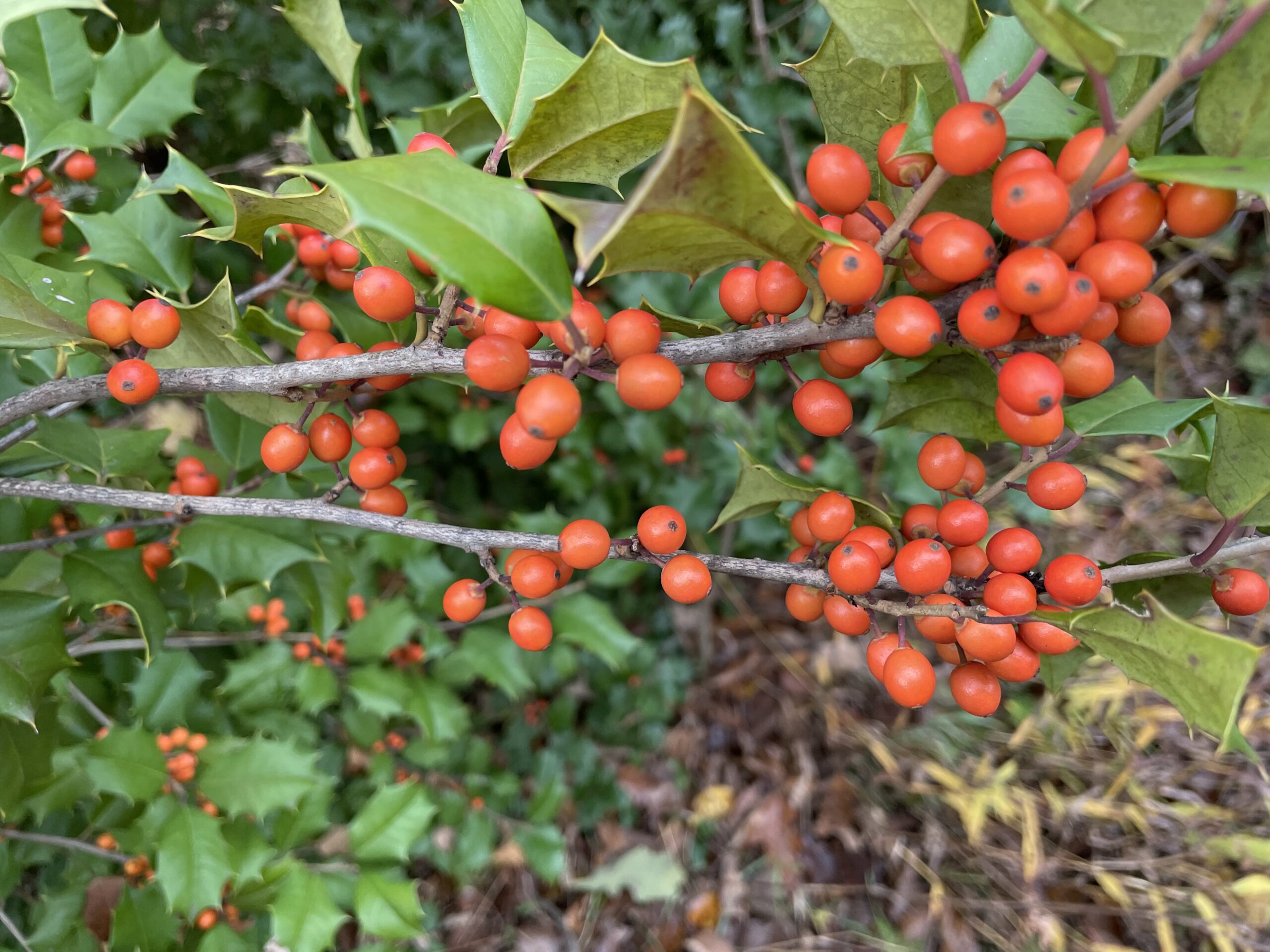
The American Holly: Ecological Dynamism
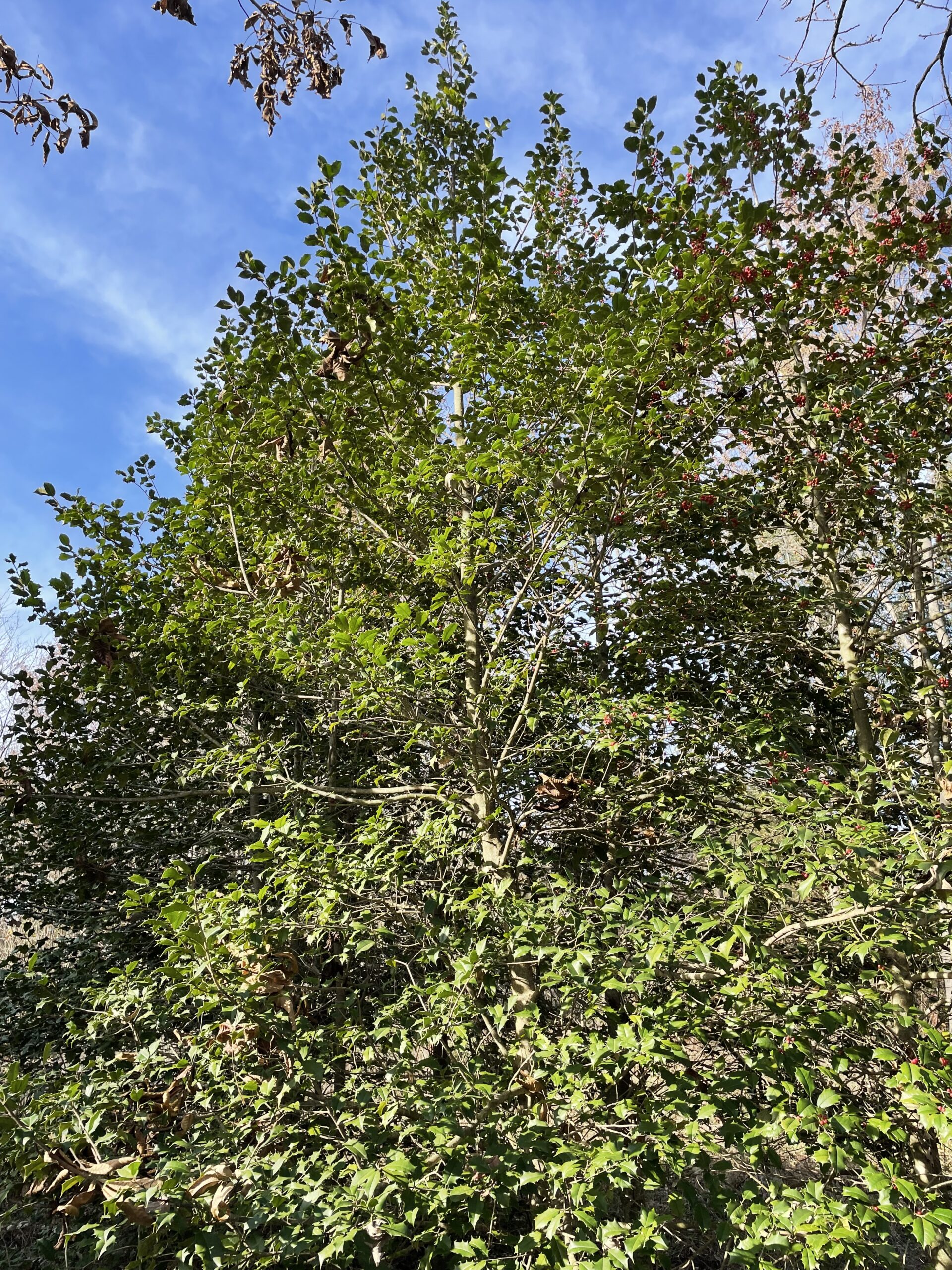
One of the great aspects of having a nursery for a long time was participating in seed exchanges. Without seed exchanges, you really are left in a botanically isolated world. There are many people throughout the world that not only want to share their plant diversity with you but also want you to succeed with it. They realize the importance of individuals working alone and finding ‘break thoughs’ especially outside the arboretum, academic or commercial systems that we are all to familiar with. Many of these systems are on a sort of ‘lock down’ today but not all. Some individuals are just glued to certain genus or species and have only a strong personal connection to the plants they work on. Even with just the North American flora, how are you going to get seed of a particularly massive tree that is currently surrounded by a parking lot in a industrial section of a town 500 miles south of you. This was the situation I was in with holly. As luck would have it, someone who owned a landscaping company not far from me was also enamored with the American holly tree. He and his family left their calling card holly in a nearby arboretum as a donation. I was inspired by this and tried to do the same but was not successful as the arboretum fell into disrepair when their focus became natives only. The arboretum also let me collect seeds over the course of a decade on a couple of species there including Cucumber magnolia and bayberry. This may seem like a small thing, but for me it was huge. Here was a lone female holly tree on top of a hill with no apparent male partner. Not long after this discovery, I found a landscape company in Pennsylvania that collected seed off several large wild trees some of which were in commercial or residential landscapes. This added to my seed sources and made it much easier to grow thousands of seedlings for sale as well as pop out my population at my farm in Michigan. Ironically, American holly was not a big seller for me. My farm is not in a soft Ilex zone six either. The other aspect of it should not be forgotten: labor. It is slow picking holly berries and rather prickly. Soon I joined the Holly Society and began reading as much as I could about the history of the American holly, Ilex opaca. As boring as that may sound, I had no idea how vital of a role this tree played in peoples lives as well as the huge number of songbirds that consume its fruits. With over a thousand cultivars, it was a field rich in diversity showing a long history of propagation by the nursery industry. It was a magnificent broad leaf tree. Who knew that the black piano keys were often made of holly? Have you ever just played the black keys? I think its the sound of the holly.

The Plant that Needs Human Help
Under cultivation the holly seems to be aligned like the rhododendron in the care department. However that is not really the case. It is not as finicky. I did not have this luxury either. I wasn’t going to be spraying anti-desiccants on the trees in winter to protect their foliage. So I began looking for plants with the greatest vigor and branching early in the seedling process. I transplanted my three year old plants to their permanent locations. After growing out several thousand seedlings I moved twenty of the most vigorous plants to my the ‘wayback’ and put them at the base of a steep hill. There the top soil was deeper. The trees were also exposed to winter winds as well as the cold temperatures where a minus 29F was once recorded on my max-min thermometer. That is nippy even in my region. Every now and then I remember hiking through the snow to see how the foliage was holding up. Only once did there appear to be the ‘bronzing’ of the foliage due to winter cold and desiccation. I planted another batch of seedlings and put those on a ridge where the wind was even greater. Today, almost 40 years later each holly planting is surrounded now by oaks, hickories and many exotic trees from around the world. Many of these trees are now almost 40 ft. tall. It was a success. I got my forest giant of holly that I was looking for. 2024 Seeds.
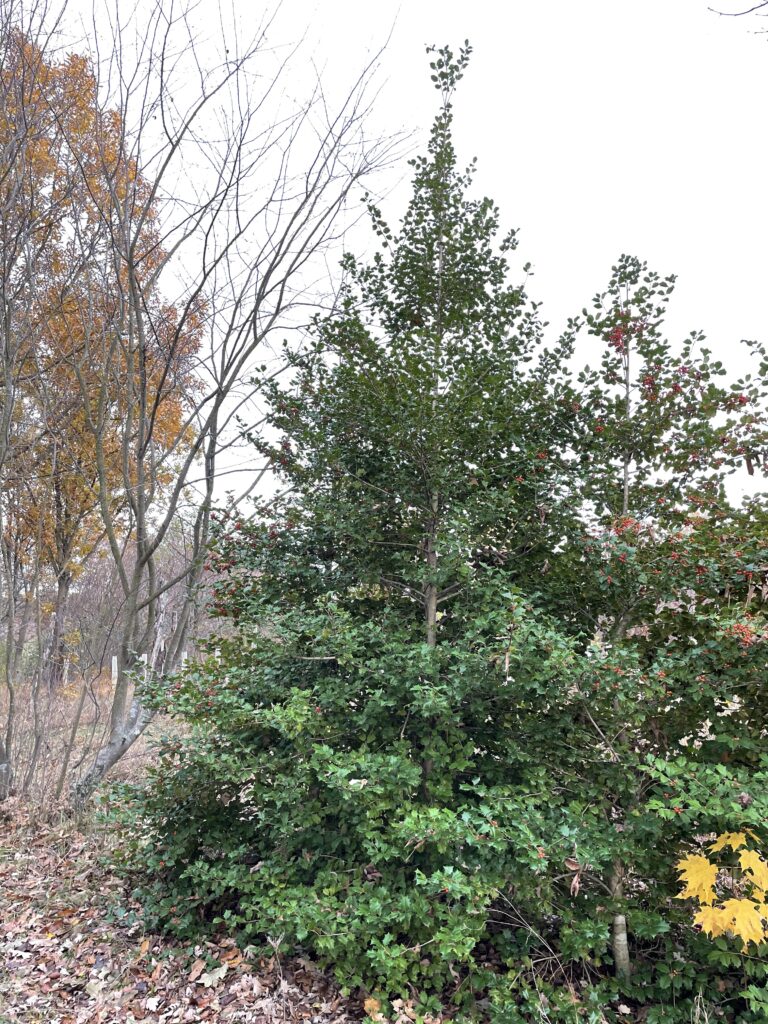
Just two years before closing the nursery, I began a process with an intern for rooting the plants. This was difficult but we did make some headway. The goal was to develop another evergreen tree crop that could be used as a fast growing Christmas tree for replanting after the holiday season. I thought it had possibilities for container grown trees that could be brought indoors for a few weeks in December and then planted out in the winter or stored in the garage or outside until spring. This is a lot to ask of a tree but I think it could easily be done. Lets face it, a garage is not a place for a tree to be. Its purgatory for most living things. Too dry, cold and dark. But I think having a hardy tree outside will work in a container. It would sit on your deck until spring. Finding the most vigorous trees, we had nailed down about five trees at my farm that looked the most promising. And from there a couple rooted better than the others. That was a far as I got. It really needed to be produced at a company that does rooting and then put directly into existing Christmas tree farms for trial. You could easily add a secondary line of plants and put them into container production for sales to larger merchandisers advertised as living Christmas trees up to Zones 4-5. Certainly there is a market for this already. Norfolk Island pines are tropical, gangly and not survive Michigan long. There is a company on the west coast that does holly foliage for cuttings for wreaths. There is at least one company here in Michigan that does deciduous holly berries as cuttings. So it is not out of the realm of possibilities. It would just take investment on the production side of it first to kick start it. For a very brief moment, I looked into getting grant money for this project. This is something I have never done. I have always financed my own projects. There was no possible way for me to do a project like that on top of my already seventy hour work week keeping my nursery afloat. But it is a good idea. Plus it combines my families traditional Christmas tree farm with an additional crop plant. I think my mom and dad would like that.
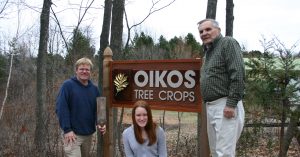
The fall of 2023 was a good berry year for my American holly. I spent a lot of time picking and processing the seeds. I use rubber gloves to protect my hands. I listen to the birds and bamboo flute music to pass the time. It is not something you can speed through for sure! Enjoy.
The seeds have a dormancy that require two years to sprout. You do a warm, cold, warm , cold treatment to initiate germination. The cold period can be done artificially in the refrigerator or planted outside but basically you follow the seasons. The soil and media you store your seeds in also helps in breaking down the hard seed coat. Often a second wave of germination will occur in the third year too. With that in mind I created a four by eight foot bed in one of my polyhouses and layered the seeds on top and covered them with mulch and sand and tamped them in. I kept the mice away and soon I had a lot of holly sprout over the course of three years. We plucked them out and put them in long narrow tree pots. American holly seedlings are slow in the first year but soon kick it in gear and are transplantable in two years. They did very well in my production houses with no loss during winter. From seed, you do appreciate the need for rooting yet seed grown plants can provide a vital genetic diversity not found in cloned plants as well as having a mixture of male and female plants for fruit production. You can easily reproduce this seed method using screened trays and leave them outside. Any flat will do. Just make sure you use either small hardware cloth or aluminum screen on the top of the tray and close it in entirely. Holly seed is one of those seeds that benefits from the biological action of the soil similar to rose seed in many ways.

The American Holly Rediscovered: It Can Happen
Almost all American holly selections of this species today going over the last hundred years are horticultural varieties for landscaping. As a result the vast majority of American holly selections have different forms not normally found in the wild. It may have smooth or variegated leaves or yellow berries. The plants may be weeping or globe shaped. Some might be columnar or prostrate. There is huge diversity of this wonderful plant. But one thing I found missing was tree like selections selected for timber like growth and fast growth with strong branching. I did find quite by accident a grower by the name of Kline that produced an orchard using vigorous types of easily rootable selections specifically for vigor and hardiness. For a while I sold those too. He was in the central U.S. which is the most northern of the range. I was very happy of my success with my seed strain and its possibilities. Ironically American holly has little use in the ornamental landscape trade. Only the Blue hollies are used now from Monrovia Nursery. They dominate the market and are produced by the millions. Ironically American holly is not found as seedling trees either. That is often viewed as inferior or unpredictable in the same way as an apple seedling. The plant is a highly cloned and used as cultivars. There is not a lot of wiggle room here. Almost always plants are rooted. It is not produced in the ‘native arsenal’ of trees either. Ironically there is also many types of pollinators attracted to the fragrant flowers. I hope to capture some of these images next year. I know of no wholesale or retail company that offers it seedlings. Probably the longer germination time is an issue for production but once initiated the tree percent is very high. SEEDS AVAILABLE 2024
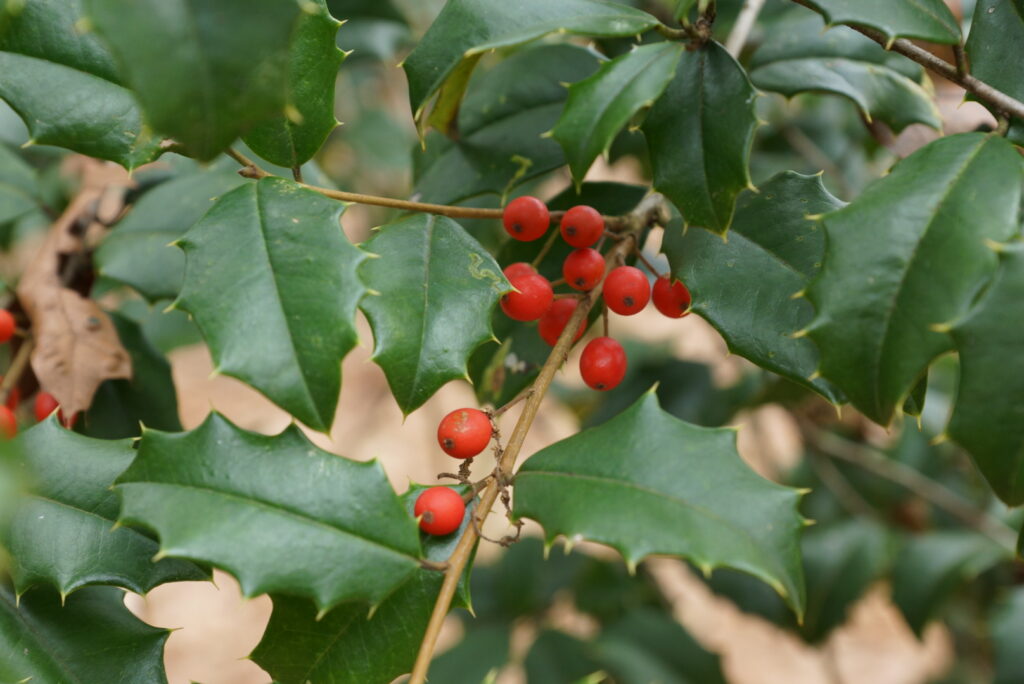
I noticed recently an article in Modern Farming on the invasiveness of American holly and how it needs to be controlled. There is a certain Forest Gump philosophy at work here. No not the box of chocolates one. I am sure the trees are lawyering up to protect their status. Luckily they don’t have to do that. Their existence speaks volumes of environmental health and integration ecology. Nature has other ideas. Keep up if you can. The spread of the plant is the solution that is needed to bring balance to nature as it is never out of balance. It is a verb. Collectively it is balancing. That is why we need American holly more than ever. I would love to see large forests of it in Michigan integrated with oaks, chestnuts and nut pines. It is even shade tolerant. It is truly the means for regreening of North America by using this indigenous North American plant. Will we help it along by moving it north and west? Will it be part of our repertoire of plants for regeneration? Only time will tell.
“Intelligence is as intelligence does.”
Enjoy. Kenneth Asmus
